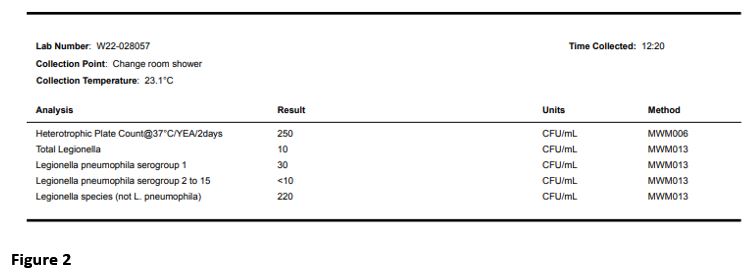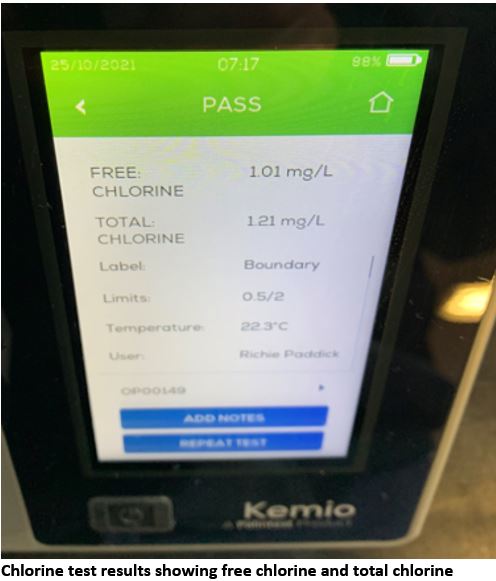Contributed by Richie Paddick
Richie Paddick has 42 years’ industry experience and is the Licensed Plumbing Contractor at Osborne Park Hospital. He worked for many years as a plumbing contractor in remote communities and mine sites, where he developed a strong interest in the areas of water quality management and Legionella management and recognised the business opportunities they create for plumbers. Richie has written and administered a Legionella Management Plan for a Rio Tinto mine site and co-written a Water Quality Management Plan and Facility Safety Water Plan for Sir Charles Gairdner Hospital.
The Australian Drinking Water Guidelines (ADWG) provide a nationally consistent basis for ensuring that our drinking water is of a known quality, is monitored and meets both chemical and microbiological standards.
In cities and towns, water at the meter will always comply with the requirements of the ADWG.
However, this is not necessarily true of water at the point of consumption – in other words, after it has travelled through the pipes on the consumer’s side of the meter.
The only way to discover whether water at the point of consumption complies with the ADWG is for a plumber to take samples for testing.
The importance of having healthy water in premises such as commercial buildings and hospitals means that regular sampling and testing is one of the most important – and most under-appreciated – duties a maintenance plumbing contractor can perform.
This article focuses on two key considerations in testing water at the point of consumption, namely Legionella bacteria and chlorine, and the relationship between them.
Legionella
There are over 58 types of Legionella bacteria. Generally, we are only interested in Legionella Pneumophila, which is the type that cause Legionnaires’ disease when it enters the lungs.
As is the case with all the types, Legionella Pneumophila has a number of sub-groups, called serogroups. As plumbers, we need to be aware that serogroup 1 is of immediate concern and requires urgent action. All Legionella Pneumophila counts above nine units (called colony forming units or CFUs) need remediation, however serogroup 1 is most dangerous.
Because Legionella is a living organism, determining the level in which it is present requires microbiological testing by an accredited testing facility. The test examples shown in this article were performed by PathWest.
The testing process usually takes nine days because the sample needs to be incubated, grown and counted.
Although rapid testing is available, it is not helpful because it just indicates the presence of Legionella, not whether it is alive or dead. For this reason, decisions about whether water quality complies with the ADWG should never be made using rapid tests.
The Environmental Health Standing Committee (enHealth) is a committee of the Australian Department of Health. In 2015 they developed the Guidelines for Legionella Control, which this article is based upon, primarily for health and aged care facilities.
Under the enHealth Guidelines for Legionella Control, testing is dependant upon the risk assessment undertaken for the individual facility. Generally, testing every three months allows an organisation to gather accurate data. Annual revues of the data might result in a decision to change the frequency of testing.
Hospitals and health care facilities will generally test every three months and review their plans every two to five years. This is because they have large and complex water systems with sections where there may be stagnant water at temperatures that promote Legionella growth.
Figure 1 shows a test result. Legionella is present, however the count for pneumophila serogroup 1 and serogroups 2-15, are less than 10 colony forming units per millilitre. There is no risk of contracting Legionella here.

Figure 2 shows a different example of a test result. In this case, the sample is positive for Legionella pneumophila serogroup 1. This requires immediate attention because:
- The location is a shower, and
- There is a high likelihood that water vapour could be inhaled

Chlorine
On their side of the meter, Water Corporation has three main methods for controlling the spread of Legionella:
- Keeping the water moving (ring mains)
- Keeping it cool (depth of pipes)
- Chlorine
Once the water is on the consumer’s side of the meter, there is no certainty that it will be either moving or cool. Unless it is a larger establishment where there might be a ring main, it is likely that water will move only when a tap is turned on.
Therefore, we rely on chlorine.
When discussing the amount of chlorine in water, we need to be clear about the distinction between total chlorine and free chlorine. Plumbers should conduct regular tests with instruments that measure both, such as the one shown in this photo.

Total chlorine is simply the amount of chlorine in the sample. Free chlorine is the amount of ‘good unused chlorine’ and must be present in a level above 0.5mg/L to keep the water microbiologically safe.
Without water movement in the pipes, sediment and biofilm can build up on the internal walls of the pipe. These contaminants provide the ideal environment for Legionella to grow, particularly if the water is above 20O C and below 45O C.
The free chlorine levels in the water might not be enough to decontaminate this condition because, as biofilm grows, it shields the Legionella from the chlorine, much like a raincoat shields you from the rain.
When the chlorine levels at the meter are known, the plumber can take samples at selected strategic points for comparison.
A word on opportunities for plumbers
There are opportunities for maintenance plumbing contractors who want to diversify into water quality management services. To do this, they will need to gather data from test results so they can provide meaningful professional advice. Armed with this data, a contractor can survey the plumbing installation looking for areas of concern such as the poor workmanship I discussed in the previous article and then formulate a plan for their client.
Heterotrophic plate count (HPC)
In addition to the tests mentioned above, another good indicator of a water system’s health is the test for the heterotrophic plate count (HPC), sometimes called the heterotrophic colony count (HCC).
Figure 3 below shows an example of HPC test results showing colony forming units per sample.
As a rule, these numbers need to be below 500. Lower numbers are better. High numbers tend to show conditions within the pipework are out of balance and might lead to excessively high levels of Legionella.
